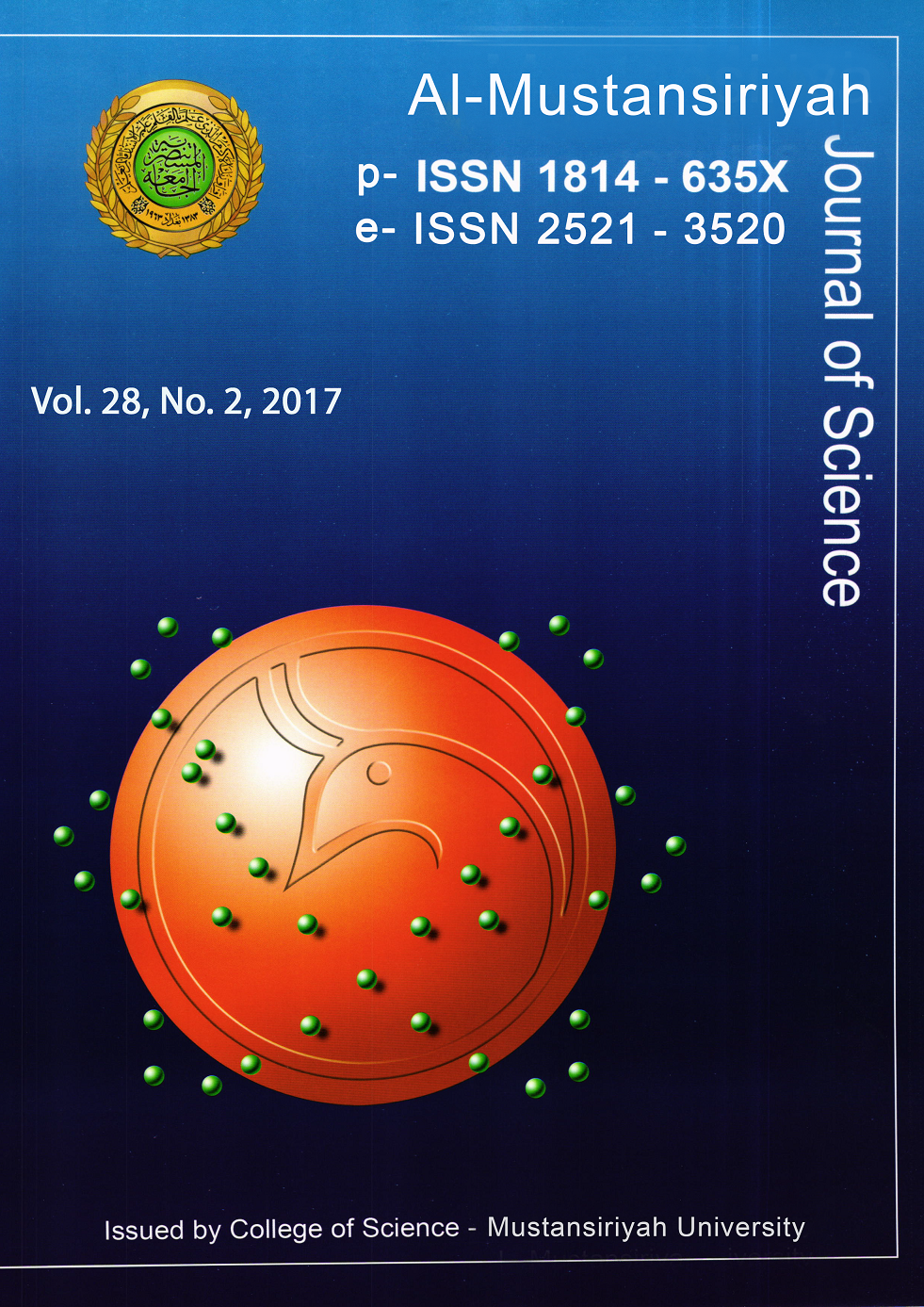Harvesting of Chlorella sp. by Co-cultivation with Some Fil-amentous Fungi
DOI:
https://doi.org/10.23851/mjs.v28i2.497Keywords:
Co-cultivation, Chlorella sp., Harvesting, Filamentous fungiAbstract
Algae are play a major role as straight producers of biofuels, so expansion of a new. harvesting-technology is important to achieve economic feasibility of biofuel production from algae.. Fungal pelletization-assisted.. Microalgal harvesting has Emerged as new research area for decreasing the harvesting cost and energy inputs in the algae-to-biofuel method. The present study tried to opti-mize process circumstances as (substrate inputs, process time and pH). Through choice of a ro-bust fungal strain. Four fungal strains (Aspergillus terreus, Trichoderma sp., Mucor sp. and Rhi-zopus sp.) were screened for their pelletizing efficiency in fresh/supplemented chu-10 with select-ed media nutrient (glucose, nitrogen and phosphorous). Results showed that Aspergillus terreus was the most efficient strain for pelletizing in the nutrient supplemented chu-10 with its neutral pH (7) and acidic pH (5). Stimulatingly, A. terreus was capable to harvest nearly 100 % of the Clorella sp. cells (1×106 spore/ml at optical density (OD) approximately 2.5 initial working algal concentration) within only 24 h. at supplementation of (10 g/l glucose, 2.5 mg/l aNH4NO3 and 0.5 mg/l mK2HPO4) also performed well at lower glucose level (5 g/l) can also results in similar har-vesting but its need relatively higher incubation time. The procedure kinetics in term of harvesting index (H. I) as well as the variation of residual glucose and pH with time was also studied. The mechanism of harvesting process was studied through microscopic, examination. A. terreus strain investigated in this study could emerge as an efficient, sustainable and economically viable tool in microalgae harvesting for biofuel production and time conservationDownloads
References
Bahadar, A. ; Khan, M. B. (2013). Pro-gress in energy from microalgae: A re-view. Renewable and Sustainable Energy Reviews, 27: 128–148.
Valipour, M. ; Mousavi, S. M. ; Valipour, R. and Rezaei, E. (2012). Air, Water, and Soil Pollution Study in Industrial Units Us-ing Environmental Flow Diagram. Journal of Basic and Applied Scientific Researches and Essays,2 : 12365-12372.
Zhang, W.1. ; Zhao, Y.1. ; Cui, B.1. ; Wang, H.1. and Liu T. (2016). Evaluation of filamentous green algae as feedstocks for biofuel production. Bioresources Tech-nology, 220:407-413.
Rhea, N. A. (2016). Evaluation of Floccu-
Rana Al-Shammari Harvesting of Chlorella sp. by Co-cultivation with Some Filamentous Fungi 2017
lation, Sedimentation, and Filtration for Dewatering of Algal Biomass. Theses and Dissertations-Biosystems and Agricultural Engineering. pp42. http://uknowledge. uky. edu/bae_etds/42.
Vandamme, D. ; Pontes, S. C. V. ; Goiris, K. ; Foubert, I. ; Pinoy, L. J. J. and Muy-laert, K. (2011). Evaluation of electro-coagulation-flocculation for harvesting marine and freshwater microalgae. Bio-technology and Bioengineering, 108(10):2320-2329.
Mackay, S. ; Pereira, G. ; Rossi, E. ; gSchwitzguebel, P. and Holliger, C. (2013). a Pelletization.. of micro-algae by. ,, made lichen. . formation through co-culture. with filamentous fungi. SME.5th Swiss Microbial Ecology Meeting. Murten, Switzerland.
Zhang, J. and Hu, B. (2012). A novel tech-nique to harvest microalgae via co-culture of filamentous fungi to procedure cell pel-lets. Bioresources Technology,114:529– 535. doi:10.1016/j. biortech.03.054.
Choi, Y. N. ; Cho, H. U. ; Utomo, J. C. ; Shin, D. Y. and Park, J. M. (2016). Effi-cient harvesting of Synechocystis sp. PCC 6803 with filamentous fungal pellets. Jour-nal of Applied Phycology, 28 (4) :2225–2231.
Gultom, S. ; Zamalloa, C. ; Hu, B. (2014). Microalgae harvest through fungal pelleti-zation—co-culture of Chlorella vulgaris and Aspergillus niger. Energies, 7:4417–4429.
Richard, M. (2003). Activated sludge mi-crobiology problems and their switch, in: Proceedings of the 20th Annual US Envi-ronmental Protection Agency National Op-erator Trainers Conference; Buffalo, New Work, June 8; US Environmental Protec-tion Agency, Washington. ,. ,;l
Barnett, H. L. and Hunter, B. B. (1972). Illustrated genera of imperfect fungi. Bur-gess Pub. Co., Minneapolis, Minnesota, USA. Barnett H. L. Illustrated Genera of Imperfect Fungi.2 nd. Ed. Burgess publish-ing company.228pp.
Richmond, A. (2004). Handbook of.. Mi-croalgal Culture. Blackwell Science.. Ltd., Oxford, UK.
Lee, R. E. (2008). Phycology.4th edition.
Colorado State University, USA.550 pp.
Gultom, S. O. and Hu, B. (2013). Review of Microalgae Harvesting via Co-Pelletization with Filamentous Fungus. Energies, 6: 5921-5939.
Dubois, M. ; Gilles, K. Hamilton, JK. ; Rebers, P. A. and Smith, F. (1951). Meth-od for sugar estimation. Nature, 4265:167-168.
Prajapati, S. K. ; Kaushik, P. ; Malik, A. ; Vijay, VK. (2012). Phycoremediation and biogas possible of native algal separates from soil and wastewater. Bioresours Technology,135:232–238.
Liao,W. ; Liu,Y. C. ; Frear and Chen, S. (2007). A new approach of pellet for-mation of a filamentous fungus – Rhizopus oryzae, Bioresources Technology, 98 : 3415– 3423.
Poelman, E. ; DePauw, N. and Jeurissen, B. (1997). Potential of electrolytic floccu-lation for pH recovery of micro-algae, Re-sources Conservation and Recycling, 19, pp.1-10.
Zhou, W. ; Cheng, Y. ; Li, Y. ; Wan, Y. ; Liu, Y. ; Lin, X. and., Ruan, R. (2012). Novel. ,fungal pelletization-assisted tech-nology for algae. ., harvesting and wastewater. ., treatment. Applied Bio-chemical Biotechnology, (167):214–228.
Zhang, J. and Hu, B. (2012). A novel method to harvest microalgae via cocul-ture of filamentous fungi to form cell pel-lets. Bioresours Technology, 114:529–535.
Christenson L. and Sims, R. (2011). Pro-duction and harvesting of microalgae for wastewater treatment, biofuels, and bi-oproducts, Biotechnology Advances, 29: 686-702.
Syahiddin, D. ; Hasan, M. and Ramachan-dran, K. B. (2003). Effect of pH on growth, spore…, production and spore feasibility of biocontrol agent Trichoderma harzani-um in submerged fermentation. ASEAN Journal of Chemical engineering, 3(1):14–18.
Downloads
Key Dates
Published
Issue
Section
License
(Starting May 5, 2024) Authors retain copyright and grant the journal right of first publication with the work simultaneously licensed under a Creative Commons Attribution (CC-BY) 4.0 License that allows others to share the work with an acknowledgement of the work’s authorship and initial publication in this journal.






















